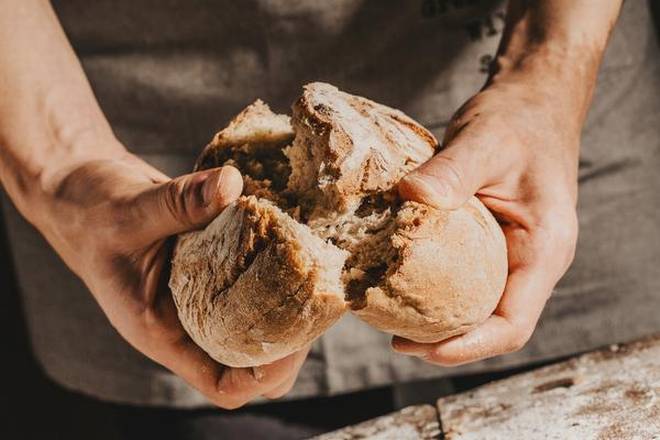
In our home, bread was the last resort, either when one was sick or when there was not enough time to cook
We don’t eat much bread. My husband grew up in Kerala and I, in Odisha. Both households had mothers who devoted themselves to feeding and taking care of not just the immediate family, but a large collection of visiting relatives as well.
They cooked endlessly, meals, snacks, masalas and whatever else we demanded — kheer, fruit salad, cake, boondi, pitha... you name it. They also experimented and learnt new recipes and tricks. Very little food was bought. Lots exchanged. Bread was the last resort, either when one was sick, or if for some reason there was not enough time to cook.
I grew up in a cosmopolitan city, Rourkela, where the steel plant employed people from across the world. This worked very well to share recipes as the Internet and Google had not been discovered yet. Most recipes were recorded in memory or in notebooks. Ma took recipes from our neighbours and made the most fluffy idlis, crisp dosas, mouth-watering chole, and deep-fried rose cookies.
My husband would also fondly recount his mother’s cooking. He has mentioned once or twice, in the 25 years I’ve known him, that Amma used to make a ‘stuffed bread’ once in a while as a treat for the family. So, when I found a rectangular loaf, unsliced, which I had never seen in stores before (or failed to connect with the story of the stuffed bread), I took it as a sign to try that ‘stuffed bread’.
Since this was food from his childhood, and he had the memory and the visuals, my husband took the lead. “First, you have to cut out a small rectangle on top of the loaf, big enough for a small spoon to go in and scoop out the bread. Cut it out carefully as you need to use that piece to seal the bread back again,” he instructed. Then we made a stuffing of boiled potatoes, finely chopped onions, beans, carrots, capsicum.
This was cooked together, seasoned with garam masala, chilli powder, salt to taste. “Amma would add one hard-boiled egg chopped into bits to the stuffing,” he said. I had chicken at home, so we cut it into tiny pieces and cooked it with pepper and chicken masala. The vegetables and chicken were combined together to stuffing consistency, with no gravy. Then the scooped-out bread was torn into tiny crumbs and added to the stuffing.
We lightly brushed some butter to the outside of the loaf and placed it on a baking tray. With a spoon, we gently placed the stuffing inside the bread. Once all the stuffing was inside the belly of the bread, the opening was sealed with the piece that had been cut out earlier, and a little butter was smeared on top with a brush.
Exotic product
The oven was preheated for 20 minutes at 180° Celsius. We placed the stuffed loaf in the oven and baked it at 120° Celsius for 20 minutes. It came out slightly crusty on the edges, warm bread appetisingly stuffed, exotic in appearance, and delicious with some fresh onion-cucumber salad and spicy chilli-tomato ketchup.
I narrated this story in our family WhatsApp group, which prompted my sister-in-law to recreate the same dish, and that pleased Amma no end. The next generation of nephews and nieces now know of the famous ‘stuffed bread’ and will hopefully make it someday just for the sake of nostalgia, and the recipe will live to tell the tale.
SUNDAY RECIPE
Amma’s Stuffed Bread
Ingredients
A standard-size unsliced loaf
2 large potatoes, boiled, peeled and mashed
1 large onion, chopped fine
1 large carrot grated
1 large capsicum, diced
10 French beans, cut into tiny pieces
200 grams boneless chicken, chopped and marinated with lemon juice, salt, chicken masala and pepper powder
Butter, oil, sugar, salt, spice powders
Method
1. Make a rectangular cut, 2x3 inches, with a small knife on one side of the bread. Go about one-and-a-half inch deep with the knife. Gently take the piece out and keep it aside to use later.
2. Scoop out the insides gently without going too close to the wall. Shred the chunks into small crumbs.
3. Add 2 tbsp cooking oil or butter to a hot wok. Add 1 tsp sugar and caramelise. Add the chopped onion, cook until translucent. Add the diced capsicum and beans. Cook for 2 minutes without cover. Add the grated carrots and cook for another 2 minutes. Add the mashed potato, chilli powder and salt to taste. Add 1/2 tsp garam masala. Mix well. Remove from wok and transfer to a plate.
4. To the same hot wok, pour 2 tbsp oil, add the boneless chicken, and cook for 5 minutes till the chicken changes colour. Cover and let cook for 10 minutes on low flame until tender and dry. Add the potato and vegetable stuffing and mix well. Finally, add the scooped out crumbs of bread, and combine.
5. Brush butter on the outside of the bread and lay it on a greased baking tray. Take a small spoonful of the stuffing and place it in the belly of the bread. Start from one corner and complete the entire base. Similarly, slowly add the entire stuffing inside the bread. It should be filled to the brim, compact and complete.
6. Preheat the oven at 180°C for 20 minutes. Place the tray with the stuffed bread in the oven and bake at 120°C for 20 minutes.
7. Remove when done and let cool for 5-7 minutes. Cut into slices while still hot and serve with a simple salad and ketchup.





















